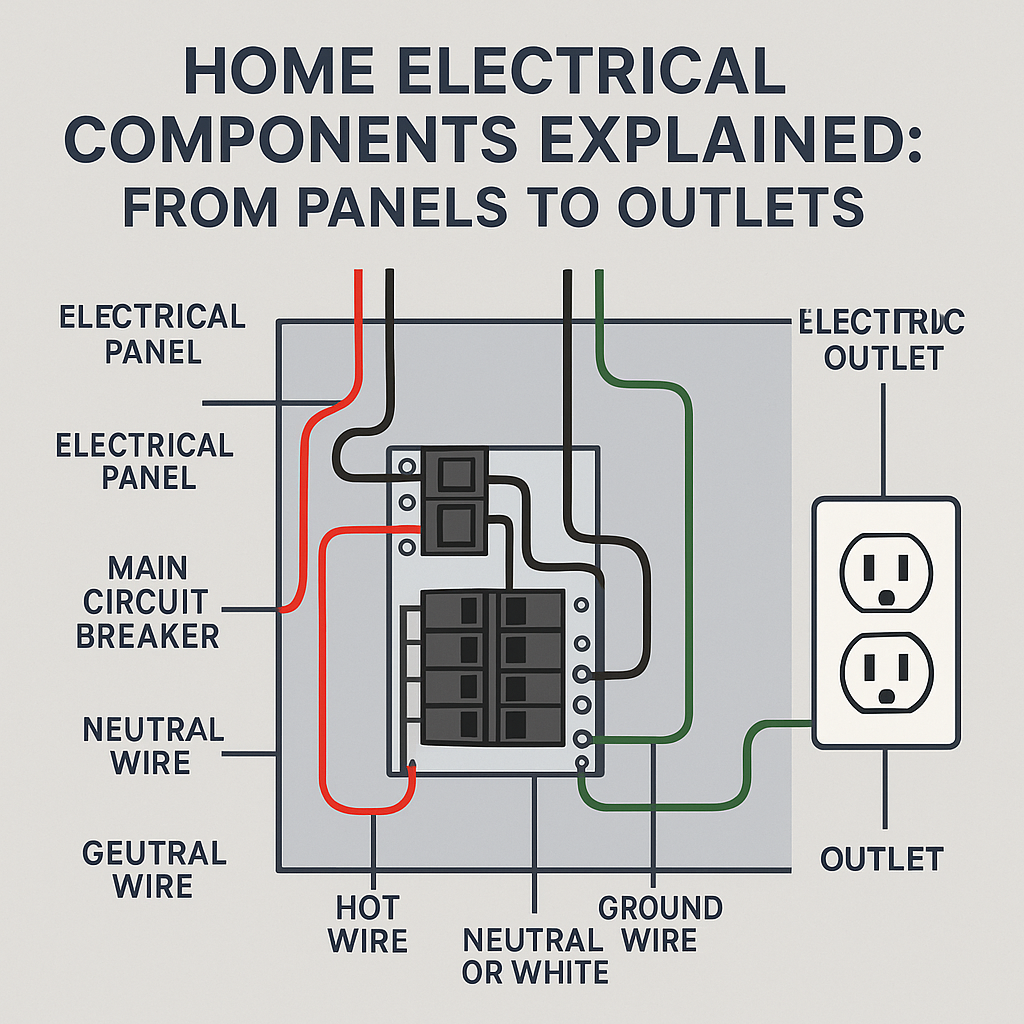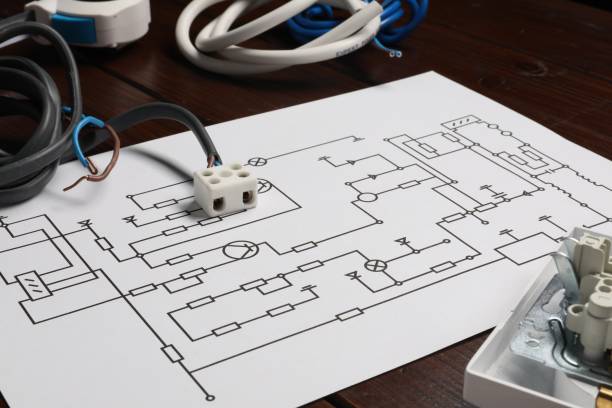
Understanding your home’s electrical components is more important than ever in 2025. With the rise of smart homes, energy efficiency, and advanced safety features, knowing what’s behind your walls can help you make informed decisions, save money, and keep your family safe. This guide breaks down everything you need to know—from electrical panels to outlets—and explores the latest trends shaping modern homes.
What Makes Up a Home Electrical System?

A typical home electrical system consists of several key components:
- Electrical Service Panel (Breaker Box)
- Wiring and Circuits
- Outlets and Switches
- Smart Devices and Automation
Each part plays a vital role in powering your home safely and efficiently. Let’s dive deeper into each component, highlight recent trends, and answer the most common questions homeowners have.
The Electrical Service Panel: The Heart of Your Home’s Power

The electrical service panel, also known as the breaker box or distribution board, is where electricity from the utility company enters your home. This panel distributes power to different circuits, each protected by a circuit breaker.
Key Functions:
- Houses the main breaker, which can shut off power to the entire house
- Contains individual circuit breakers for each area or major appliance
- Protects against overloads and electrical fires by tripping when circuits are overloaded
Recent Trends:
- Smart Panels: Modern panels now offer connectivity features, letting you monitor energy usage and control breakers remotely via smartphone apps.
- Integration with Renewable Energy: Panels are being upgraded to handle solar, battery, and electric vehicle charging systems.
- Safety Upgrades: Newer panels improve fire protection and are easier to reset after a trip.
Signs You Need an Upgrade:
- Frequent breaker trips
- Rust or corrosion inside the panel
- Buzzing or crackling sounds
- Home renovations or adding high-power appliances
Home Wiring: The Hidden Network

Wiring is the network of insulated conductors running behind your walls, connecting every outlet, switch, and appliance.
Types of Wiring:
- Romex (NM) Cable: Standard for most residential circuits
- Armored Cable (BX): Used in older homes or for added protection
- Specialty Circuits: Dedicated wiring for high-power devices like ovens, dryers, and EV chargers
Safety Tips:
- Have wiring inspected if your home is over 30 years old
- Upgrade aluminum wiring to copper for safety
- Never overload circuits—use power strips with surge protection
Modern Trends:
- Smart Wiring: Supports advanced automation and high-speed data for smart devices.
- Energy-Efficient Circuits: Designed to minimize energy loss and support energy-efficient appliances.
Outlets and Switches: Everyday Touchpoints

Outlets and switches are where you interact with your home’s electrical system every day.
Types of Outlets:
- Standard Outlets: For general use
- GFCI Outlets: Required in kitchens, bathrooms, and outdoors for shock protection
- AFCI Outlets: Protect against arc faults, reducing fire risk
- Smart Outlets: Allow remote control, scheduling, and energy monitoring via smartphone
Switches:
- Standard Switches: Simple on/off control
- Dimmer Switches: Adjust lighting levels for comfort and energy savings
- Smart Switches: Integrate with home automation systems for voice and app control
Maintenance Tips:
- Replace loose or cracked outlets immediately
- Test GFCI outlets monthly
- Upgrade to smart outlets for enhanced safety and convenience
Smart Home Electrical Components: The Future Is Now

Smart home technology is transforming how we interact with our electrical systems. In 2025, smart devices are not just convenient—they’re essential for modern living.
Key Trends:
- AI-Powered Automation: Smart assistants learn your routines and automate lighting, heating, and appliances for efficiency and comfort.
- Remote Monitoring: Apps let you track energy use, control outlets, and even reset breakers from anywhere.
- Predictive Maintenance: AI can alert you to potential issues before they become problems, reducing downtime and repair costs.
Popular Smart Devices:
- Smart plugs and outlets
- Smart switches and dimmers
- Smart circuit breakers and panels
- Integrated security and alarm systems
Benefits:
- Lower energy bills
- Improved safety
- Greater convenience and control
Real-World Examples and Case Studies
Case Study 1: Upgrading to Smart Circuit Breakers
A family in Detroit upgraded their traditional panel to a smart panel. Now, they receive real-time alerts on their phone if a breaker trips, can monitor energy usage by circuit, and control breakers remotely—improving both safety and energy efficiency.
Case Study 2: Installing Smart Outlets for Energy Savings
A homeowner in California replaced standard outlets with smart outlets. By scheduling devices to turn off automatically and monitoring usage, they cut their electricity bill by 20% in six months.
Case Study 3: Whole-Home Smart Wiring
A new build in Texas was wired with future-proof cabling to support high-speed internet and smart devices in every room. The family enjoys seamless automation, voice control, and robust security—all integrated into their electrical system.
Frequently Asked Questions
What is a circuit breaker and why does it trip?
A circuit breaker is a safety device that automatically cuts off power to a circuit when it detects an overload or short circuit, preventing electrical fires and equipment damage.
How do I know if my electrical panel needs an upgrade?
Signs include frequent breaker trips, visible rust or corrosion, buzzing sounds, or if your home is being renovated or adding high-power appliances.
Are smart outlets worth it?
Yes. Smart outlets offer convenience, energy savings, and enhanced safety by letting you monitor and control devices remotely.
What’s the difference between GFCI and standard outlets?
GFCI outlets protect against electric shock by automatically shutting off power if they detect a ground fault. They’re required in wet areas like kitchens and bathrooms.
How can I make my home electrical system more energy efficient?
Upgrade to energy-efficient appliances, use smart outlets and switches, and consider renewable energy sources like solar panels.
Conclusion
Understanding your home’s electrical components—from panels to outlets—is crucial for safety, efficiency, and embracing the latest smart home trends. As technology evolves, upgrading your electrical system can offer significant benefits, from lower energy bills to improved convenience and security. For major upgrades or if you’re unsure about your system’s safety, always consult a licensed electrician.
Ready to make your home smarter and safer? Explore more tips and guides at SmartHomesBee and take the next step toward a future-ready home.
Pingback: Best Wall Plates For Seamless Smart Device Integration - SmartElectricalHomeRenovation